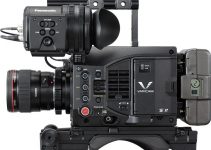Just when you think you have a finished and polished script, you discover that the script needs to be changed yet again. As the script’s purpose changes depending on the film production stage, it is never really finished. However, it is quite important to change your script fitting it to the needs of the production stage you are currently in.
What is your script during the various production stages?
In very early stages where you are seeking finance, the script works as a sales document. This document needs to capture the attention of your audience consisting of investors, agents/managers of actors, sales agents and distributors.
During the preproduction stage, the script works as a blueprint for the producer and line producer, who base the budget and potential schedule on the script. The script also becomes a design document, pointing the way to the story to the director, cast and crew. The assistant director and production manager use the script at this stage as a logistical asset or a map.
When rehearsing, the script becomes a scaffold used by the actors to make the characters leap off the page and become living and believable characters.
During the production stage, the script acts as a baseline. The script is seldom followed with 100 percent fidelity and any differences are reconciled by either forcing the footage to follow the script or moving away in line with the story. The script supervisor and the editor use the script to compare what has been shot with what was planned to be shot and ensure that no major scenes are missed during principle photography.
More often than not the finished film is not the same as the script because the written story leaves a lot of details out. This can be good and bad – bad because what you had in your head as a story and put down on paper will never be the same as what the final version of the film becomes; good because your cast and crew will contribute with ideas you would never have thought of yourself.
Your script as a sales document
Once your script is finished and ready to be presented to the world, you need to consider carefully the needs of your first audience – the investors, agents/managers, actors and possibly sales agents. Investors might not know too much about filmmaking and it is imperative for the script to be written in a “user-friendly” format. At the same time, actors and agent/managers are very busy individuals who receive hundreds of scripts. Considering the level of filmmaking knowledge of investors and the busy schedules of agents/ managers and actors, your main objective is for this version of the script to be fast and good.
To make your script read fast, you can use some of the following suggestions:
- Take out unnecessary camera directions as many people cannot really visualize them well
- Minimize scene transitions and try to consolidate scenes instead of jumping every ¼ of a page
- Shorten your descriptions especially if they are longer than three lines. No one likes to read long paragraphs of dense descriptions
- Cut your script to a 100 page mark as long scripts can put off readers
- Smooth out any technical talk that your characters use. Think about The Social Network – a dialogue heavy film with court cases and nerds talking about code, where expositional dialog is mixed with action scenes. Here you need to remember – show, do not tell
- Try to include clear blocking that will give your readers sense of the physical action such as the choreography of a chase or a flight scene. However, try not to overcomplicate it by writing every punch and dodge of a fight as so many details will slow down the reading
Your script as a blueprint
Once you have found financing, it is time to give the script to a line producer or a producing partner to break it down and create a reasonable budget. A line producer will break down the script to its various components – cast, locations, vehicles, props, special effects, etc, and will then work out a budget and a schedule. Looked at from this perspective, your script will have both expensive elements such as a character walking in the deserted center of London and cheap elements as characters talking in a room.
Expensive script elements can cause lots of aggravation to your line producer especially if you are shooting your film on a shoe-string budget. You can maximize the value of your scenes and eliminate some that cost money but do not add to the story without changing fundamentally your script.
Below are some examples of how to simplify the script and cut out expensive scenes.
- Take out one-line characters. Characters that say one or two lines but otherwise sit quietly in the background will cost you a day’s wages for the actor. Potentially you can give the lines to a character that will be part of the film for a longer time or cut the lines out altogether.
- Try to eliminate one-scene locations that are not needed for a full day. When the schedule is created, if you have one-scene locations where you are shooting only part of the day, you need to consider the need to change locations throughout the day. Moving locations in the middle of day wastes time, is unproductive and costs money in terms of location fees, props, etc. Instead of using the one-scene location, you can use another location you already plan to use and dress it up differently.
- Think of alternatives to tough locations. Airports, courthouses, cathedrals, etc. have tough insurance requirements, bureaucratic constraints and extremely high fees that might put the location out of reach. You can try stealing the shots risking to be kicked out. More viable options might be to set the scene somewhere else or get the establishing scene as B-roll and then shoot the scene in a different location.
- Licensing music can be a huge time drain. Famous songs such as “Paradise City” by Guns n’ Roses can bump your budget requirements by thousands. Although you can leave the music cue in the script to show readers the scene atmosphere you have in mind, you want to remain open-minded when the film is scored.
- Licensing footage from movies or TV shows can be costly. You might want to consider whether you need the footage at all or even try to re-create it.
- Re-consider phone conversations as these need to be shot twice to get both sides of the conversation. You can consider making the phone conversation in-person or trim one side of the conversation.
- Come up with alternatives to rooftop scenes. Although rooftop views can be breath-taking, shooting on rooftops can prove to be difficult as equipment needs to be hauled up, the weather can be treacherous, and clean dialog can be unachievable. You might want to find an alternative location for the scene to avoid the hassle.
- Big crowd scenes take time and cost money to set up. You might want to shoot any crowd scenes in one or two days and use the least amount of people necessary for the scene.
You should not just cut out scenes from the script but need to be aware at all times that expensive scenes will cost either time, cash, favors or all three at the same time.
[via Mastering Film]
Disclaimer: As an Amazon Associate partner and participant in B&H and Adorama Affiliate programmes, we earn a small comission from each purchase made through the affiliate links listed above at no additional cost to you.




Great advice, I appreciate you sharing.